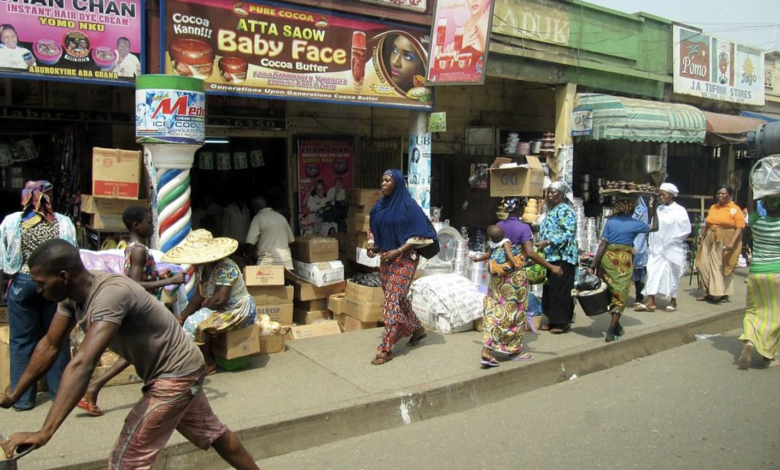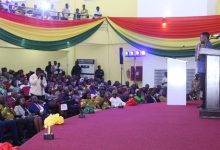
Kejetia Market has a long and fascinating history that dates back to the early 1900s. The market began as a small trading post where local farmers and merchants could sell their goods. But, it quickly grew in size and importance as Kumasi became a major center of trade and commerce in West Africa.
In the early years, the market was known as the Kumasi Central Market. It was located on a small piece of land near the Asafo and Asantemanso gates of the city. As the market grew, it became clear that a larger space was needed to accommodate the increasing number of vendors and shoppers. In 1954, the Kumasi Municipal Council acquired a large tract of land in the Kejetia area of the city and began construction on a new market. The new market, named Kejetia Market, was opened in 1957 and quickly became one of the largest and busiest markets in West Africa.
Over the years, Kejetia Market has undergone several renovations and expansions to keep up with the growing demands of the city. In 2015, a major redevelopment project was launched. In hopes to modernize and improve the market’s infrastructure and facilities.
History aside, Kejetia Market, located in Kumasi, Ghana, is the largest open-air single market in Africa. The market spans over 12 hectares and houses over 10,000 traders selling a diverse range of goods and services.
Kejetia Market has been in existence for over 200 years and has grown to become a vital part of Ghana’s economy. The market serves as a hub for trading and commerce in the region, attracting visitors from across the country and beyond.
One of the unique aspects of Kejetia Market is its organization. Despite its sprawling size, the market is divided into different sections for different types of goods. For example, there are sections for electronics, clothing, food, and traditional crafts. This makes it easier for shoppers to find what they are looking for and for traders to sell their goods effectively.
The market is also known for its vibrant and colorful atmosphere. Visitors can expect to be greeted with the sounds of haggling and bargaining, the smells of street food and spices, and the sights of brightly colored fabrics and crafts.
However, with its size and popularity come challenges. Kejetia Market is known for its busy and sometimes chaotic atmosphere. Visitors must be careful to keep their belongings safe and avoid getting lost in the maze-like alleys.
In recent years, the market has undergone a major renovation project. Aimed at improving its infrastructure and facilities. The project, completed in 2021, included the construction of a new state-of-the-art terminal for public transportation. As well as the construction of new stalls, roads, and walkways.
The renovation project was funded by a range of partners. Including the government of Ghana, the African Development Bank, and the World Bank. The goal of the project was to improve the market’s functionality and safety while also preserving its unique character and charm.
Despite the challenges and changes, Kejetia Market remains an important cultural and economic institution in Ghana. The market is not just a place for buying and selling goods; it is also a hub for social interaction and community building.
Many of the traders at Kejetia Market have been there for years, even decades. They’ve developed close relationships with their customers and fellow traders. The market is also a key source of employment for many people in the region. Providing opportunities for entrepreneurship and economic empowerment.
In addition to its economic and social significance, Kejetia Market is also a major tourist attraction. For tourists, visiting Kejetia Market is a unique and immersive experience. Allowing them to witness the vibrant and lively culture of Kumasi firsthand. The market is a sensory overload, with bright colors, lively music, and the smells of fresh food and spices all around.
Tourists can wander through the maze-like alleys of the market, taking in the sights and sounds and interacting with vendors. Many of the vendors are happy to engage with tourists, sharing stories about their products and offering recommendations on what to buy.
One of the highlights of visiting Kejetia Market is the opportunity to shop for traditional Ghanaian textiles. Such as Kente cloth and Adinkra cloth. These fabrics are brightly colored and intricately patterned. They are often used to create traditional clothing and accessories.
Another popular item to purchase at the market is shea butter, which is made from the nuts of the shea tree and is known for its moisturizing properties. Tourists can also find a wide variety of fresh fruits and vegetables, as well as spices and herbs used in Ghanaian cuisine. Who knows, maybe you can make some money by online betting and spend it in the market!
While the market can be overwhelming for some tourists. Nevertheless, it is a must-visit destination for those looking to experience the rich culture and history of Kumasi. With its vibrant atmosphere, friendly vendors, and unique products, Kejetia Market is a memorable destination that is sure to leave a lasting impression on any traveler. Despite its challenges and changes, the market remains an essential part of the country’s economy and social fabric, and a must-visit destination for anyone interested in Ghanaian culture and history.







